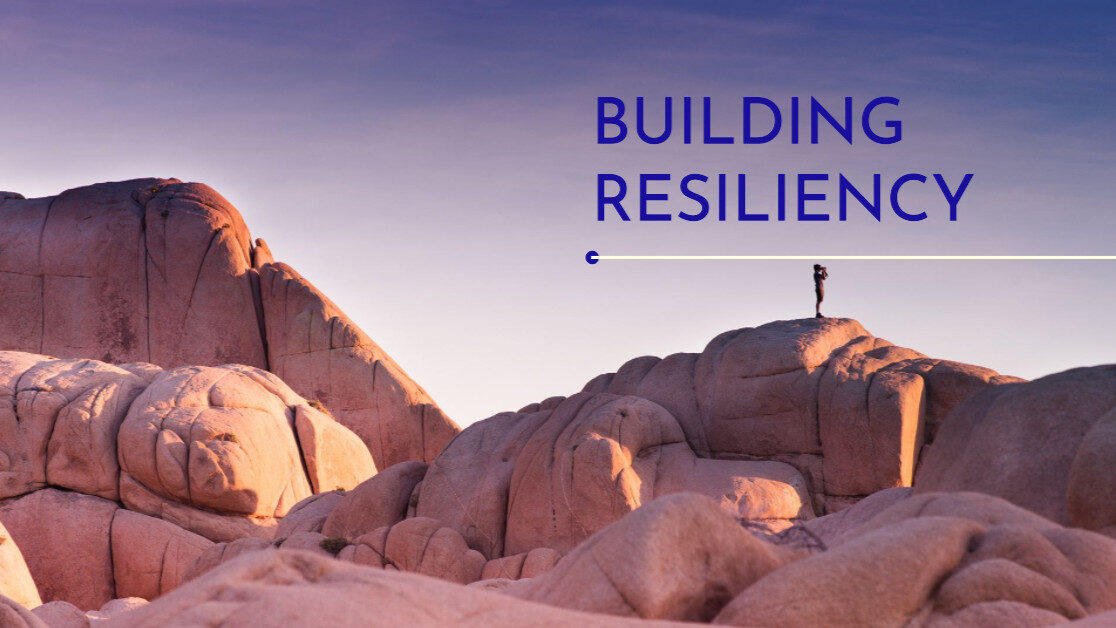

What does it mean to endure? To face life’s relentless storms, battered by waves of adversity, yet find a way to rise?
For many, resilience is an abstract concept; a term we hear but rarely pause to understand. When life brings us to our knees, when grief consumes us, when the weight of the world becomes too much to bear, resilience reveals its true meaning. It is not just the ability to “bounce back” but the strength to move forward, even when every step feels impossible.
Resilience is often painted as an innate quality; a gift some are born with while others are left to struggle. This couldn’t be further from the truth. Resilience is not a luxury reserved for the fortunate few; it is a skill that can be learned, nurtured, and strengthened. It is the invisible thread that ties us to hope when despair takes hold. It is the fire inside that refuses to be extinguished, no matter how fierce the winds of life blow.
In today’s world, where uncertainty feels constant, the ability to cultivate resilience is more important than ever. From the Covid pandemic that reshaped our lives, to economic instability, natural disasters, and the personal battles we face behind closed doors, the challenges of modern life are unyielding and unpredictable. Yet within these challenges lies the potential for profound growth, transformation, and understanding. Resilience offers us the tools to not just survive but to thrive; to find light in the darkest of places.


How do we build it? How do we find strength when we feel like we’ve lost everything?
With this post I take a delve into resilience; it is not a quick-fix guide or a shallow stigma and biased talk; it is a dive into the art and science of resilience. I will explore its roots and uncover practical, tangible ways to strengthen this life-changing skill.
It is not about pretending to be invincible. It is about embracing our humanity, recognising our vulnerabilities, and understanding that resilience is not about erasing pain but learning to carry it differently. It is about acknowledging that while life’s hardest moments may leave scars, it also has the capacity to heal, rebuild, and grow stronger in the process.
What happens when life knocks you down? Do you stay in that moment of defeat, replaying your perceived failures like a broken record, or do you begin to see the faintest possibility that this could be the start of something transformative?
This is the essence of a growth mindset:
The belief that our abilities, intelligence, and capacity to overcome challenges are not static or fixed; they can evolve with effort, learning, and perseverance.
At its core, a growth mindset is about choice. It is about choosing to view obstacles not as insurmountable walls but as opportunities to learn, adapt, and grow. This perspective does not diminish the pain or difficulty of life’s challenges, but it changes how we interpret them. A failure no longer becomes a reflection of our worth; it becomes a stepping stone. A setback no longer defines us; it propels us forward.
Psychologist Dr Carol Dweck, who pioneered the concept of a growth mindset, uncovered that individuals who believe their abilities can be developed tend to achieve more than those with a fixed mindset; where talents and intelligence are seen as static. Why? Because a growth mindset fuels resilience. It shifts our inner dialogue from:
“I can’t do this” to “I can’t do this… yet.”
That single word, yet, unlocks the power of possibility and encourages persistence in the face of adversity.
Failure can feel crushing. It can whisper insidious lies into your ear:
“You’re not good enough. You’ll never succeed. You should give up.”
A growth mindset reframes failure entirely. Instead of an end, it becomes a beginning; a chance to analyse what went wrong, adjust your approach, and try again. Failure becomes data, not destiny.


“Failure is simply the opportunity to begin again, this time more intelligently” – Henry Ford
Think of some of history’s greatest innovators:
Each of them faced failure, but their growth mindsets transformed those moments into fuel for their greatest successes.
Building a growth mindset takes practice, self-awareness, and a willingness to challenge long-held beliefs, often misunderstood beliefs. Here are some ways to get started:

 Reframe Your Inner Dialogue
Reframe Your Inner DialoguePay attention to how you speak to yourself when things go wrong. Replace “I can’t do this” with “I’m learning to do this” or “I can’t do this …yet.“ Replace “I’ve failed” with “What can I learn from this?” Words matter. The stories you tell yourself shape your reality.
Comfort zones are a breeding ground for stagnation. Deliberately place yourself in situations where you must stretch your abilities. Start small, a new hobby, a skill you have been avoiding, or a difficult conversation. Growth happens at the edge of discomfort.
A growth mindset values the process as much as the outcome. Praise yourself (and others) for persistence, creativity, and resilience, regardless of the final result. This reinforces the belief that growth is an ongoing journey.
Constructive criticism can feel like a personal attack, but it is often a mirror showing where you can improve. Instead of becoming defensive, approach feedback with curiosity. What can you take away that will make you better?
Even if progress feels slow, acknowledge and celebrate it. Gratitude shifts your focus from what you lack to what you’ve achieved. This shift fuels motivation to keep going.
A growth mindset does not mean you will not struggle or feel defeated at times. It does not mean that the journey will be easy or that success is guaranteed. It does mean that every experience – good or bad – has the potential to teach you something valuable. It means that when you stumble, you have the tools to get back up, reflect, and try again. It means embracing the belief that you, yourself, are a work in progress, and that progress itself is a victory.

“You have brains in your head. You have feet in your shoes. You can steer yourself in any direction YOU CHOOSE. You’re on your own. And you know what you know. And YOU are the one who’ll decide where to go…” – Dr Seuss

When you embrace a growth mindset, you are not just preparing yourself to weather life’s challenges, you are arming yourself to thrive in their aftermath. You are discovering that resilience is not a gift you are born with; it is a skill you build, one challenge at a time.
When life feels overwhelming, self-care is often the first thing we sacrifice. We tell ourselves:
“I’ll rest when this is done”, or “I don’t have time to look after myself right now.”
The truth is, neglecting self-care is like trying to run a marathon on an empty tank. Eventually, you will stop, not because you want to, but because your body and mind simply can not keep going.
Self-care is not selfish; it is survival. It is the foundation upon which resilience is built, the lifeline that keeps us grounded in turbulent times. Without it, our capacity to cope diminishes, and the weight of life’s challenges feels heavier than it truly is. Prioritising self-care is not an indulgence, it is a necessity. It is a way of saying:
“I deserve to feel well, to be whole, to thrive.”
Read my previous post on “Self-Care: Supporting your own Mental Health” for more information.
According to the Mental Health Foundation (2022), individuals who prioritise self-care report lower levels of burnout, higher emotional resilience, and a greater sense of purpose. Self-care is not just a wellness trend; it is a scientifically backed strategy for thriving in an unpredictable world.
Treat self-care as a commitment, not an afterthought. Whether it is a 20-minute walk, a quiet moment to read, or a dedicated evening to unwind, block it out in your calendar. Protect that time as fiercely as you would a work meeting or a family obligation.
Your body sends signals when it is running on empty; headaches, irritability, fatigue, or an inability to focus. Pay attention to these warning signs and respond with care:
Your body knows what it needs; trust it.
Setting boundaries is one of the most powerful acts of self-care. Saying no to others is often saying yes to yourself. Remember, you cannot pour from an empty cup.
Exercise is not just about physical fitness; it is about mental health. Whether it is a yoga class, a brisk walk, or dancing in your living room, movement releases stress, clears your mind, and boosts resilience. Find what works for you and make it part of your routine.
Sleep is not a luxury; it is a biological necessity. Create a bedtime routine that promotes rest: dim the lights, disconnect from screens, and give your mind permission to unwind. Aim for 7-9 hours (I aim for 5 – 7 hours personally – its an age thing !! ) of quality sleep per night and watch how your capacity to handle stress transforms.
Food is fuel, but it is also comfort. Choose meals that nourish your body while bringing you joy. Remember, nourishment is not just about food. Surround yourself with people who uplift you, engage in activities that inspire you, and consume media that informs rather than drains you (what is a newspaper? don’t fall for click-bait).
Self-care begins with self-awareness. Regularly ask yourself, “What do I need right now?“ Be honest with your answer, and take action accordingly. Some days, you might need a run; other days, you might need rest. Honour your needs without judgment.
When you prioritise self-care, you are not just building resilience for yourself; you are creating a ripple effect that touches everyone around you. You show your loved ones that it is okay to rest, to set boundaries, to put their well-being first. You model what it means to be strong and compassionate, not by overextending yourself but by recognising the power of self-preservation.


Choosing self-care in a world that glorifies exhaustion is an act of defiance. It is a refusal to let the chaos of life consume you. It is a declaration that your well-being matters, that you deserve to feel whole, and that resilience begins with looking after yourself.
Prioritising self-care is not just a personal commitment; it is a revolution, a bold, unapologetic step toward living a life rooted in strength, balance, and purpose.
#WorktoLiveNotLivetoWork
When you are standing at the base of a mountain, staring up at its towering peak, the climb can feel impossible. The sheer magnitude of the challenge ahead overwhelms you, paralysing you before you even take the first step. This is what life can feel like when you face a significant hardship; a mountain too steep, a goal too far, a problem too complex. But here is the truth: you do not climb a mountain in one giant leap. You conquer it step by step, one foothold at a time.
Setting realistic goals is the key to transforming what feels insurmountable into something achievable. It is about breaking down life’s overwhelming challenges into manageable pieces, creating a roadmap that not only guides you forward but also empowers you to believe that progress is possible. Realistic goals are not a compromise; they are a strategy; a deliberate choice to set yourself up for success instead of defeat.
In the pursuit of resilience, unrealistic expectations are one of our greatest adversaries. When we set goals that are too ambitious or vague, we set ourselves up for disappointment and frustration. The gap between where we are and where we want to be feels impossible to bridge, and every stumble reinforces a narrative of failure.
But when we set realistic goals, we create a foundation for hope and momentum. Each small achievement becomes a stepping stone, proving to ourselves that we are capable, that we are progressing, that we are moving closer to the life we want to build. Realistic goals transform the journey from a daunting uphill battle into a series of achievable victories.
The power of realistic goal-setting lies in its impact on our mindset. They help focus our efforts, increase our motivation, and create measurable milestones that track our progress. Each time we achieve a goal, no matter how small, we experience a psychological boost. This sense of accomplishment fuels our resilience, building the confidence to tackle the next step.
Realistic goals also reduce stress. Instead of feeling overwhelmed by the enormity of a challenge, we focus on what we can control in the moment. This shift in perspective not only calms the mind but also enhances our ability to problem-solve and adapt.
Break your larger goals into smaller, actionable steps. Instead of saying, “I want to be healthier“, reframe it as, “I will walk for 20 minutes three times a week.“ Smaller, specific goals feel achievable and build momentum.
Ambiguity breeds frustration. Define your goals in measurable terms, so you can clearly track your progress. For example, instead of “I want to save money“, set a target like “I will save £50 each month for six months.“
Consider your time, energy, and circumstances when setting goals. Overcommitting can lead to burnout and disappointment. A realistic goal fits within your current life while still challenging you to grow.
Resilience is not about getting everything right; it is about moving forward, even when the path is imperfect. Celebrate progress, no matter how small, and view setbacks as opportunities to learn and adapt.
When goals reflect what truly matters to you, they become more meaningful and motivating. Ask yourself, “Why does this goal matter? How does it align with the life I want to build?“ Purpose drives persistence.
Deadlines provide structure and urgency but must be realistic. Avoid overwhelming yourself by setting achievable timelines that account for potential setbacks. Flexibility is key to sustaining momentum.
Share your goals with someone you trust. Their encouragement and accountability can help keep you on track, especially when motivation wanes. A support network amplifies resilience.

Each small victory reinforces your belief in your own capability:
Small victories remind us that progress is possible, even on the darkest days. They teach us that no matter how overwhelming the mountain may seem, each step brings us closer to the summit. They show us that resilience is not a grand, sweeping act but a series of small, deliberate choices to keep moving forward.

When you set a realistic goal, you are making a promise to yourself, to prioritise your well-being, to honour your journey. It is not about achieving perfection; it is about committing to growth, one step at a time. With each step, you are not just moving closer to your goal; you are building the resilience to face whatever life throws your way.
Life’s hardest battles are rarely fought alone, yet for many, the instinct in times of struggle is to retreat; to isolate, to hide, to silence the cries for help. It is easy to convince ourselves that reaching out is a sign of weakness or that our problems will burden others. Resilience doesn’t come from enduring in silence. It is built through connection, through allowing others to share the weight of our struggles and remind us that we are not alone.
A support network isn’t just a safety net; it is the foundation of resilience. It is the community that catches you when you fall, the voices that encourage you to stand back up, the people who remind you that even in your darkest moments, you are seen, valued, and loved. Building a support network isn’t about having a large group of people; it is about cultivating relationships that are genuine, reciprocal, and steadfast.

Human beings are wired for connection. Studies in neuroscience reveal that when we share our emotions with others, the brain releases oxytocin – a hormone that reduces stress and empowers feelings of trust and safety. Connection is not just comforting; it is biologically essential. It regulates our nervous system, stabilises our emotions, and strengthens our ability to face challenges. However, in today’s world, where digital interactions often replace face-to-face conversations, genuine connection can feel elusive. Loneliness is a silent epidemic, with the UK government recognising it as a public health issue and appointing a Minister for Loneliness in 2018. This isn’t just about emotional well-being; chronic loneliness has been linked to higher rates of anxiety, depression, and even physical health conditions like heart disease.
A strong support network does not just help us survive adversity; it enables us to thrive despite it. It reminds us that resilience is not a solo endeavour but a collective effort, strengthened by the bonds we share with others.

A strong support network does not just benefit you, it creates an effect that strengthens your entire community. When you allow others to support you, you are giving them permission to do the same when they are in need. You are empowering a culture of openness, empathy, and mutual care; a culture that can break the stigma surrounding mental health and encourage others to seek help.
Resilience is not about being invulnerable; it is about being supported. It is about recognising that while we can not always control life’s challenges, we can choose to face them together. Connection gives us the courage to keep going, the strength to persevere, and the hope to believe that better days are possible.
If you have ever felt alone in your struggles, let this be a reminder: you do not have to carry your burdens by yourself. There are people who want to help, who care deeply about your well-being, and who will walk alongside you through life’s storms. All you have to do is reach out.
#ItsOKtoTalk
#ItsOKtoNOTbeOK
Change is terrifying. It is the ground shifting beneath your feet, the familiar slipping through your fingers, and the fear of stepping into the unknown. Whether it is the loss of a job, the end of a relationship, or a major life transition, change disrupts the comfortable rhythms of our lives and leaves us grappling with uncertainty. It is no wonder we all frequently resist it, clinging to what feels safe, even when it no longer serves us.
Here is the truth:
Change is inevitable. It is not an exception to life; it is life.
Resilience is not about avoiding change, it is about learning to embrace it, to see it not as an enemy but as a catalyst for growth, reinvention, and transformation. When we stop fighting change and start leaning into it, we unlock a powerful truth: the only constant in life is change, and the only way to thrive is to adapt.

Why do we resist change so fiercely? At its core, resistance comes from fear; fear of the unknown, fear of failure, fear of losing control. Our brains are wired to seek predictability because it makes us feel safe. Change threatens that predictability, triggering our fight-or-flight response and convincing us that the risk is not worth the potential reward.

Resisting change does not stop it from happening; it only prolongs our discomfort. Clinging to what is familiar, even when it no longer works, keeps us stuck. It prevents us from discovering what lies on the other side of the fear, possibility, growth, and a life that aligns more closely with who we are becoming.
When we embrace change, we reclaim our power. Instead of being swept away by life’s currents, we learn to navigate them with intention and grace. Embracing change does not mean we will not feel fear or grief; it means acknowledging those feelings while moving forward anyway. It is about trusting that even when the path is uncertain, we have the strength to walk it.
Change often brings opportunities we could not have imagined while clinging to the existing status quo. It challenges us to adapt, to think creatively, and to discover new facets of ourselves. The greatest transformations often come from the most painful changes; those moments when life breaks us open and forces us to rebuild in ways we never thought possible.
At its core, change is an invitation; a chance to shed old habits, beliefs, or circumstances that no longer serve us and to step into something new. It is not always easy, and it is rarely comfortable, but it is always an opportunity. Even in the midst of painful change, there is potential for growth, healing, and transformation.
Think of a caterpillar in its cocoon. The process of becoming a butterfly is neither simple nor painless, but it is necessary. The same is true for each of us. Change forces us to confront our limitations, to stretch beyond what we thought possible, and to emerge stronger, wiser, and more capable.
Resilience is not about avoiding change; it is about thriving because of it. It is about seeing every ending as a new beginning and every challenge as an opportunity to grow. When we embrace change, we build not just the ability to endure but the courage to transform.
Embrace change, lean into it, and trust that you have the strength to navigate whatever lies ahead.
Resilience is not about having all the answers or travelling through life unscathed. It is about learning how to bend without breaking, how to adapt when the ground beneath you shifts, and how to find strength even when hope feels distant. It is not a skill you master overnight but a lifelong journey; a process of growth, transformation, and discovery.
Each strategy explored in this post, from embracing a growth mindset to building a support network, is a stepping stone on the path to resilience. None of these steps will erase life’s challenges, but they will equip you to face them with courage and clarity. Resilience does not mean you will not stumble; it means you will find a way to get back up, stronger and more determined than before.
As you move forward, remember that resilience is not about perfection. It is about progress. It is about taking small, deliberate steps toward healing and growth, even when the road ahead feels uncertain. It is about recognising that every setback, every challenge, and every moment of struggle is an opportunity to learn, to adapt, and to rise.

The beauty of resilience is that it exists within all of us. It is not reserved for the strong, the lucky, or the privileged. It is built through action, reflection, and connection. It is forged in the moments when we choose to keep going, even when everything inside us tells us to stop. It is a testament to the human spirit; the incredible, unyielding will to survive, thrive, and create meaning from even the hardest experiences.

So, take a deep breath. Step forward. Build your resilience, one choice at a time and remember, no matter how difficult life may feel, you are not alone. There is always hope, always help, and always the possibility of a brighter tomorrow.
Now you have finished reading this post, my hope is that you will walk away not just with strategies and insights but with a renewed sense of possibility; a belief that no matter how heavy life’s burdens may feel, there is always a way forward. Resilience is not just a skill for life; it is a testament to the strength that lies within each of us, waiting to be discovered.

Microsoft Solution Architect, Senior Project Manager, and Mental Health Advocate